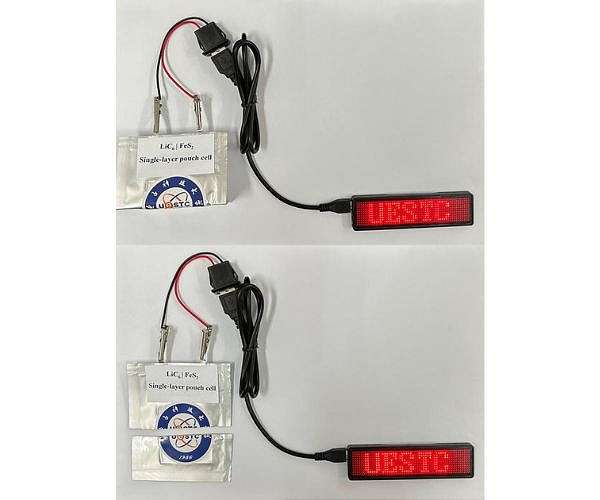Folded or cut, this lithium-sulfur battery continues to power devices
Most rechargeable batteries that power portable devices such as toys, handheld vacuum cleaners and e-bikes use lithium-ion technology. But these batteries can have a short lifespan and can catch fire if damaged. To address stability and safety concerns, researchers reporting in “ACS Energy Letters” designed a lithium-sulfur (Li-S) battery with an improved iron sulfide cathode. One prototype remains very stable for 300 charge-discharge cycles, and another provides power even after being folded or cut.
Sulfur has been proposed as a material for lithium-ion batteries due to its low cost and potential to retain more energy than lithium metal oxides and other materials used in traditional ion-based versions. To make Li-S batteries stable at high temperatures, researchers have previously proposed using a carbonate-based electrolyte to separate the two electrodes (an iron sulfide cathode and a lithium metal-containing anode). However, when the sulfide in the cathode dissolves in the electrolyte, it forms an impermeable precipitate, causing the cell to quickly lose capacity. Liping Wang and colleagues wondered if they could add a layer between the cathode and the electrolyte to reduce this corrosion without reducing functionality and chargeability.
The team coated iron sulfide cathodes with different polymers and found in initial electrochemical performance testing that polyacrylic acid (PAA) performed best, maintaining the electrode’s discharge capacity after 300 charge-discharge cycles. The researchers then integrated a PAA-coated iron sulfide cathode into a prototype battery design, which also included a carbonate-based electrolyte, a lithium metal foil as an ion source, and a graphite-based anode. They then produced and tested prototypes of both pocket and button cell batteries.
After more than 100 charge-discharge cycles, Wang and colleagues observed no substantial loss of capacity in the pouch cell. Additional experiments showed that the pouch cell still worked after it was folded and cut in half. The coin cell retained 72% of its capacity after 300 charge-discharge cycles. They then applied the polymer coating to cathodes made of other metals, creating lithium-molybdenum and lithium-vanadium batteries. These cells also had a stable capacity over 300 charge-discharge cycles. Overall, the results indicate that coated cathodes could produce not only safer, long-life Li-S batteries, but also efficient batteries with other metal sulfides, Wang’s team said.
Research report:Chelating type binders for stable cycling and highly safe transition metal sulfide based lithium batteries


